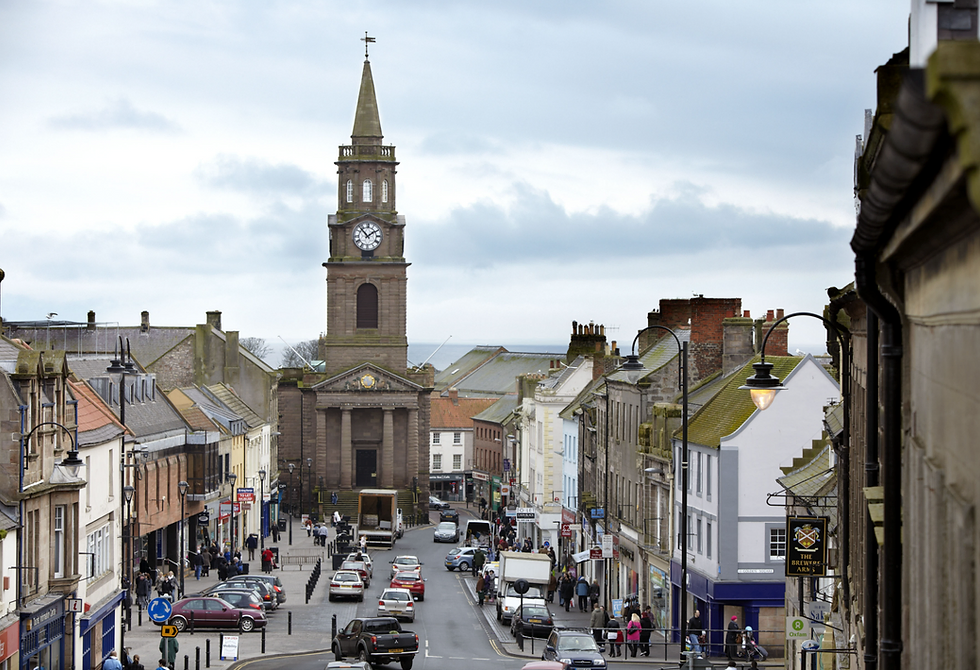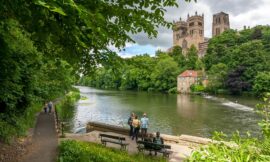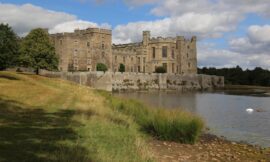Berwick-upon-Tweed, often simply referred to as Berwick, is a historic market town and civil parish in Northumberland, England. Located at the mouth of the River Tweed on the east coast, Berwick is the northernmost town in England, lying just 2.5 miles south of the Scottish border. This town boasts a rich and tumultuous history, having changed hands between England and Scotland multiple times over the centuries. Today, Berwick-upon-Tweed is known for its well-preserved medieval and Elizabethan architecture, its scenic coastal and river landscapes, and its vibrant cultural life.
Historical Background
Berwick’s strategic location on the border between England and Scotland made it a focal point of conflict throughout the medieval period. The town changed hands at least 13 times between the two nations before finally becoming part of England in 1482. This turbulent history has left a significant mark on Berwick, visible in its numerous historic buildings and fortifications.
The town’s early history is marked by its establishment as an important trading port and royal burgh in the 12th century. Berwick’s significance grew due to its location on the River Tweed, which made it a crucial point for trade and military strategy. The town’s economy flourished during periods of peace, while its fortifications were continually strengthened during times of conflict.
Berwick’s Fortifications
Berwick is renowned for its extensive and well-preserved fortifications, which are among the finest examples of their kind in Europe. The town’s defenses include medieval walls, an Elizabethan rampart, and a series of bastions and gates.
The Elizabethan Walls
One of Berwick’s most notable features is its Elizabethan walls, constructed between 1558 and 1570 during the reign of Queen Elizabeth I. These walls were built to protect the town from potential Scottish invasions and are a testament to the military engineering of the time. The walls, which encircle the town, include impressive bastions named after English nobles, such as Brass Bastion and Cumberland Bastion. Visitors can walk along the well-maintained ramparts, enjoying panoramic views of the town, the River Tweed, and the North Sea.
Berwick Castle
Although much of Berwick Castle has been lost over the centuries, its ruins remain an important historical site. The castle, originally built in the 12th century, played a pivotal role in the town’s defense. Its remnants, including sections of the curtain wall and the White Wall, can be explored near the railway station. The castle’s Great Hall and keep were largely dismantled during the construction of the railway in the 19th century, but the site retains a sense of its former grandeur.
The Old Bridge and the Royal Border Bridge
Berwick is home to two iconic bridges that span the River Tweed, each representing different periods in the town’s history.
The Old Bridge
The Old Bridge, also known as Berwick Bridge, is a 15-arch stone bridge completed in 1624. It was commissioned by King James VI and I to replace earlier wooden structures that had been damaged by floods and warfare. The bridge’s elegant design and sturdy construction have made it a lasting symbol of Berwick’s resilience and strategic importance.
The Royal Border Bridge
The Royal Border Bridge is a stunning railway viaduct designed by the renowned engineer Robert Stephenson. Completed in 1850, the bridge features 28 arches and stands as an architectural marvel of the Victorian era. It continues to carry the East Coast Main Line over the River Tweed, connecting London and Edinburgh.
Cultural and Community Life
Berwick-upon-Tweed has a vibrant cultural scene, with numerous festivals, events, and attractions that celebrate the town’s heritage and contemporary arts. The Maltings Theatre and Cinema is a cultural hub, hosting a variety of performances, films, and exhibitions throughout the year. The Berwick Film & Media Arts Festival is a highlight of the cultural calendar, attracting filmmakers and audiences from around the world.
The town also boasts a range of museums and galleries, including the Berwick Museum and Art Gallery, which is housed in the historic Barracks. The museum’s collections explore the town’s history, art, and archaeology, offering insights into its unique position on the Anglo-Scottish border.
Natural Beauty and Recreation
Berwick’s coastal and riverine landscapes provide ample opportunities for outdoor recreation and exploration. The town’s beaches, such as Spittal Beach, are popular with locals and visitors alike for their natural beauty and tranquil setting. The Berwickshire Coastal Path offers stunning walking routes along the rugged coastline, with dramatic cliffs, sea stacks, and wildlife to discover.
The River Tweed itself is renowned for its salmon fishing, attracting anglers from far and wide. Boat trips on the river provide a different perspective on the town’s historic landmarks and natural scenery.
Conclusion
Berwick-upon-Tweed is a town steeped in history, with a legacy shaped by centuries of conflict and cultural exchange between England and Scotland. Its well-preserved fortifications, historic bridges, and vibrant cultural life make it a fascinating destination for visitors. Whether exploring its ancient walls, enjoying a performance at The Maltings, or simply taking in the scenic beauty of the River Tweed and the North Sea coast, Berwick offers a rich and varied experience that reflects its unique heritage and enduring appeal.



